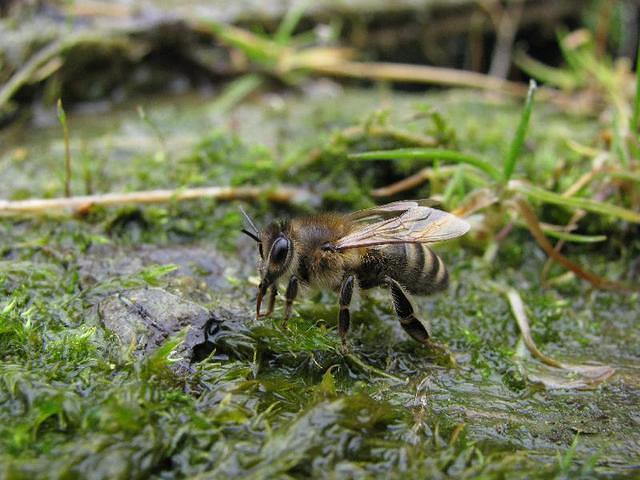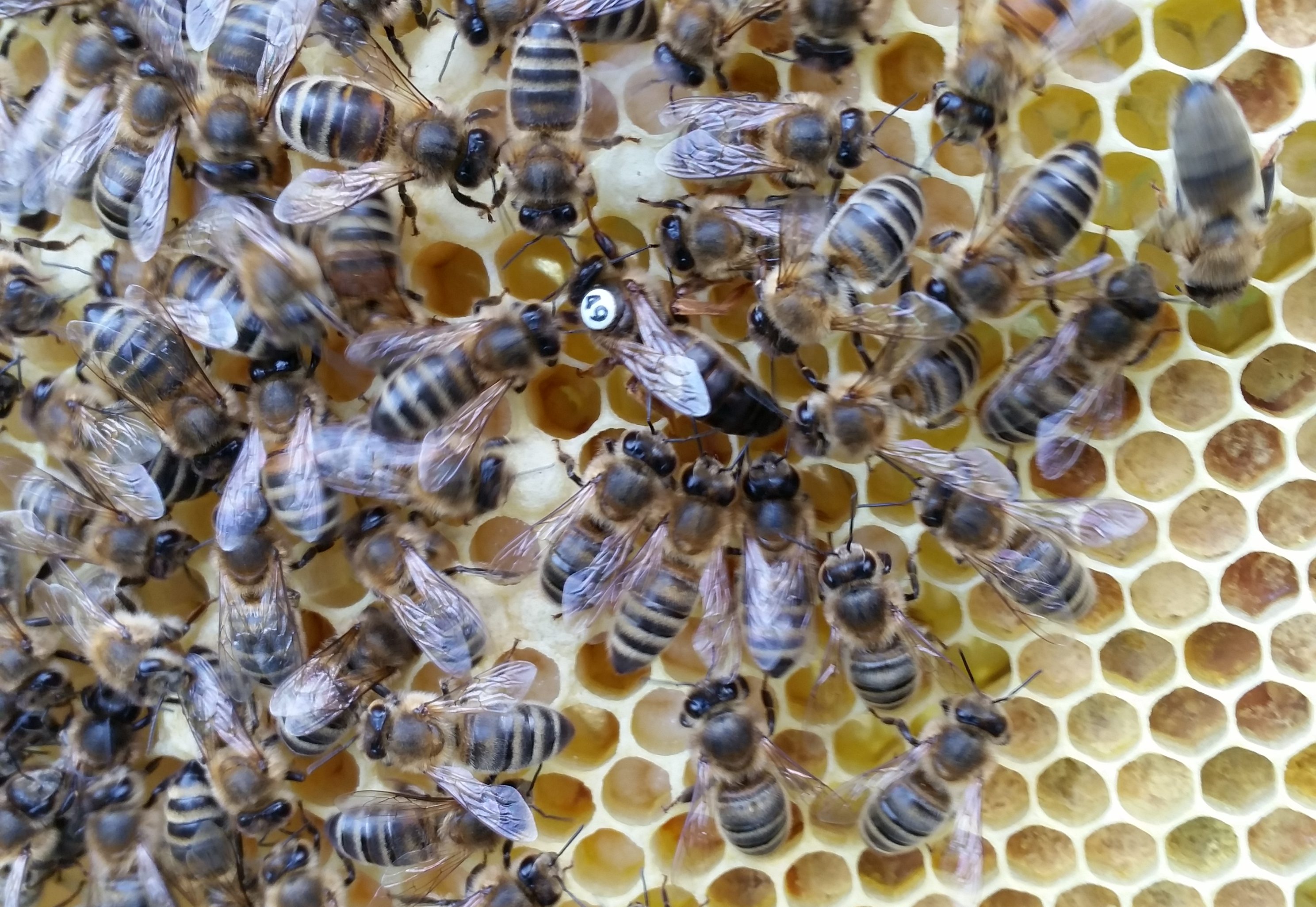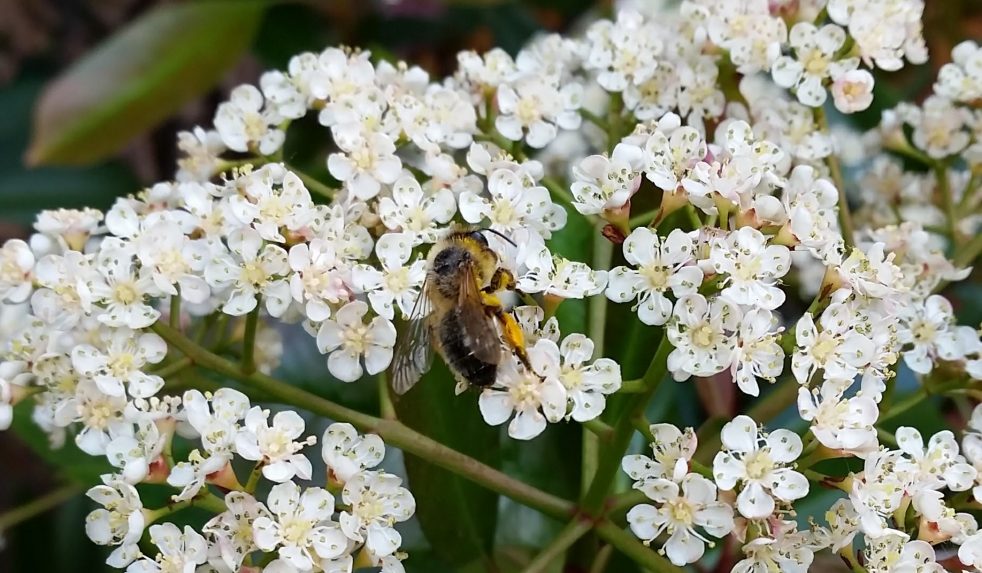
Its original habitat since the last glaciation is Balkan Peninsula with neighbouring regions. Slovenia is often mentioned as a homeland of the Carniolan honey bee although it is evident that the natural habitat of Apis mellifera carnica, is much bigger and that Slovenia sits at the western edge of its area. However, due to the vivid traffic with Carniolan queen bees since the 18th century, the Carniolan honey bee is spread worldwide, today.
These bees are about the same size as the Italian honey bee, but they are physically distinguished. Apis mellifera carnica is often described as the grey honeybee. Its hairs are brownish – grey and short, giving an overall grey perception. Carnica’s abdomen is free of yellow rings. Their chitin is dark, but it is possible to find lighter coloured or brown coloured rings and dots on their bodies.
Apis mellifera carnica bees are nearly as big and long as the Western European black bees, though their abdomens are much slimmer. Additionally, the Carniolan bee has a very long tongue which is very well adapted for foraging from clover, a very high elbow joint and very short hair.
According to scientists and reputable Slovenian breeders of Carniolan Bees there’s a few morphological characteristics distinguishing Apis mellifera carnica from other bee races:
Worker bee
• Medium-sized, thin, generally grey, long legs;
• The abdomen is pointed and dark, the first wide lateral abdominal segment may exhibit leathery brown spots or patches, the first abdominal segment may be entirely leathery brown;
• The tomentum is grey to yellowish grey, wide, and very distinct;
• The hairs of the fifth abdominal segment are thick and short (0.25–0.35 mm);
• The cubital index is 2.7 (2.4–3.0);
• The proboscis is 6.4 to 6.8 mm long.
Drone
• The abdomen is dark, never yellow;
• The hair is grey or greyish brown;
• The cubital index is 2.0 (1.8–2.3).
Queen bee
• Light brown, leathery brown, or dark brown;
• A well-developed, resistant thorax and a long, pointed abdomen.
• If there is less than 10 kg of food in the hive, the queen will cease laying eggs.
Carniolan bees are very docile, rarely stings, calmly sits on the combs and are renowned for its high yield. They do not usually drift into other hives and have very good orientation; Carniolan are flying at lower temperature than other races of bees and over-winter in relatively small colonies (from 5-8 frames) consuming moderate amounts of stored food. These bees can quickly adapt to changes in local environment what makes them very valuable in modern beekeeping. Well known for its exceptionally intensive spring development. Carniolan queens have good, compact laying pattern and their offspring have high resistant to the brood diseases. Young queens lay eggs later (end of November) and start earlier (January). Research shows that workers live up to 12% longer than other breeds.
Carniolan bees are particularly skilled at adjusting their worker population to nectar accessibility. It relies on these rapid adjustments of population levels to rapidly expand the worker bee populations after nectar becomes accessible in the spring, and, again, to fast cut off the brood production when the nectar ceases. It meets periods of high nectar with high worker populations and subsequently stores large amounts of honey and pollen during those periods. The queen will terminate or even stop laying eggs as soon as pollen and nectar from nature are not accessible or reduced. This is adaptation to rigid environment.
As it has been mentioned before those bees fly on forages already at lower temperatures and brings large amounts of pollen, because exploits such as nectar and honeydew flow. The Carniolan bee has an intensive and fast development in spring. In March, April and May development of the brood is very intense and brood is quickly filling the hive. “Apis mellifera carnica build up is extreme. No other Apis mellifera to compare with. Because of intensive build up, swarming is the hive management issue and not a genetic issue”. Carnica is a very good comb builder. They can build up to 30 frames in a good year.
The Carniolan bee is a blend of some of the most important qualities that a bee can have. There are of course some arguments against, but the positive characteristics overshadow the negative ones. “Brother Adam even called the Carniolan bees the key that unlocks the hidden potential of other strains”.
Mixed source of information; pictures in this post are thanks to the kindness of http://apis-mellifera-carnica.eu/

